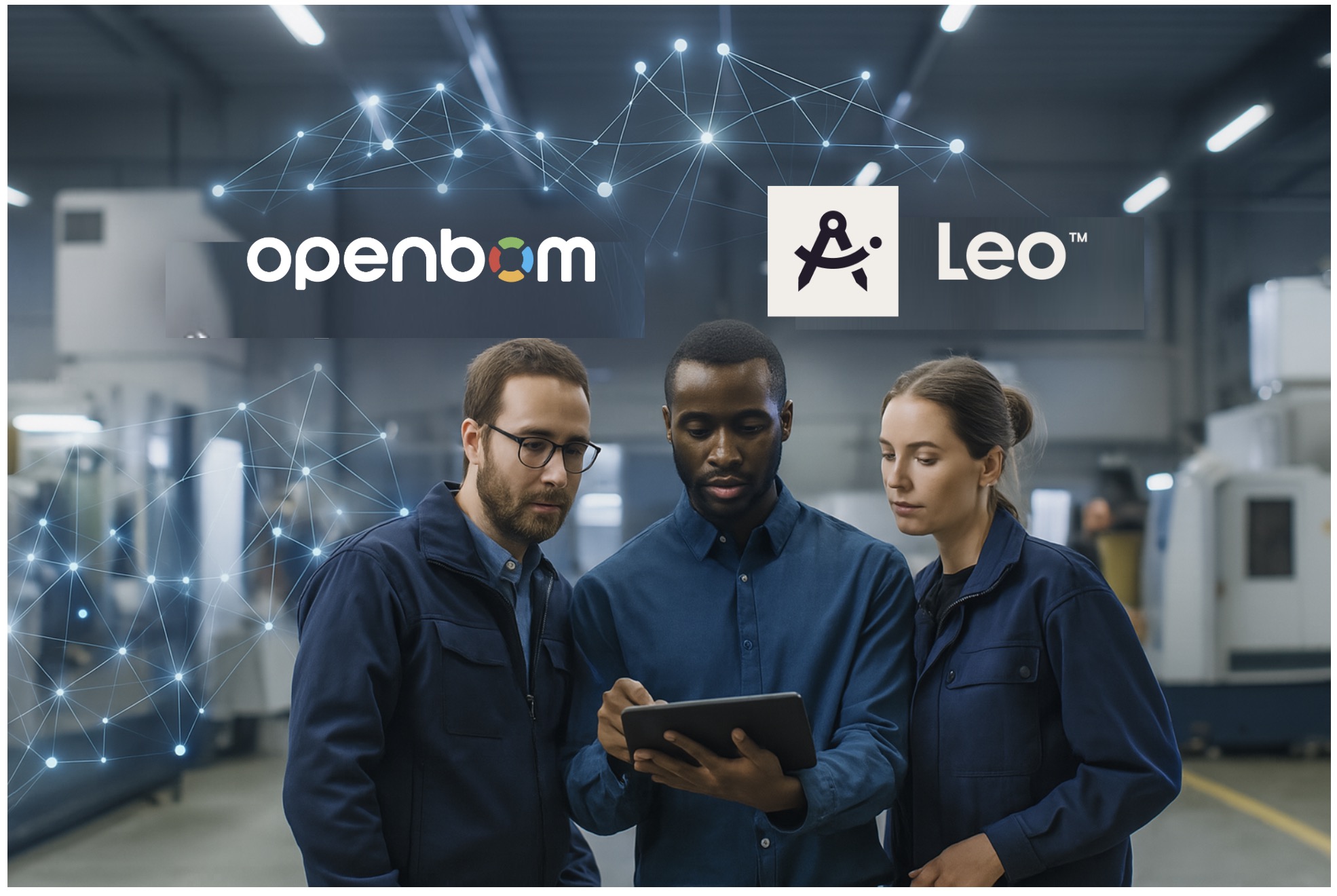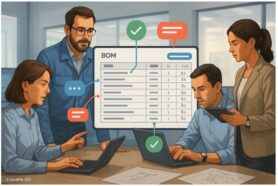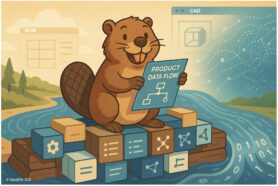
Engineering and manufacturing teams are standing at a major crossroads – caught between legacy tools of the past and a fast-accelerating wave of intelligent, collaborative platforms. Gone are the days when traditional PDM systems and siloed file management could keep up with the complexity and speed of modern product development.
Today, the real breakthroughs are happening at the intersection of AI and engineering knowledge. We’re witnessing a shift from disconnected data to intelligent systems that can reason, learn, and act – helping engineers make better decisions faster and with more context.
Let’s dive into what this transformation looks like and how it’s empowering the next generation of product development.
The Changing Landscape: From Traditional PDM to Cloud-Native Intelligence
Engineering isn’t what it used to be, and that’s a good thing. Do you remember the previous engineering revolution? In my memory, I have the snapshot when mechanical engineers realized they can use Windows computers for their professional ME work and SolidWorks was born.I had a chance to speak about that time with Maor Farid, the founder of Leo AI, as he recalled his first introduction to SolidWorks. Things are changing now.
Today, engineering collaboration demands a new phase—one that’s faster, smarter, and driven by AI, data integration, and cloud-native collaboration. The days when engineering teams were tethered to desktop-bound PDM systems, clunky file servers, and emails full of outdated spreadsheets are soon going to be only in the museum.
But… we still have some work to do now. Despite their clunkiness, those desktop CAD tools are delivering an amazing level of productivity because of the familiarity of engineers with the tools and years of creating file-based workflows. It creates significant headwinds for cloud CAD developers and the adoption of new tools.
And this is an opportunity as well for new tools that are quickly getting traction and are capable of integrating with existing tools in a seamless way.
Let’s dive into how this shift is happening and what it means for modern engineering and manufacturing teams.
Traditional PDM and PLM systems were built for a world of file folders, on-prem servers, and single-location teams. They served their purpose—sort of. But in today’s fast-moving, distributed, and digital world, they’re holding teams back.
Cloud-native platforms like OpenBOM are changing the game. They don’t just store files—they create an online environment where engineering data flows naturally between people, tools, processes, and companies. It’s about more than moving to the cloud; it’s about shifting from file-centric thinking to data-centric collaboration and switching from Excel data exchange to Google-like collaboration.
In this new paradigm, data isn’t locked away – it’s available, contextual, and ready to be used by people, systems, and, increasingly, intelligent assistants.
Engineering Knowledge: From Documents to Connected Intelligence
Ask any engineer what their biggest challenge is, and you’ll probably hear about “finding the right information” and getting technical assistance. Whether it’s a decision rationale, technical knowledge, a part selection, or an old project that holds valuable insights- it’s often buried in someone’s head or a spreadsheet from 2017.
This is where new technologies like AI, new online platforms, and knowledge graphs, step in.
By connecting product development and technical knowledge data – CAD files, specifications, supplier records, design notes, and more, we’re finally starting to build organizational memory. Think of it as Google Knowledge Graph meets your PDM engineering vault.
Imagine:
- Being able to trace why a component was chosen two years ago.
- Getting suggestions based on previous successful designs.
- Spotting inconsistencies in a BOM before they become production errors.
We’re not talking science fiction. We’re talking about the tools that are being built today.
Openness and Shared Intelligence: Enabling a New Toolchain
One thing is clear: no single platform will “do it all.” And that’s a good thing.
Modern teams use many tools—CAD, PLM, ERP, simulation, procurement portals, and now AI services. The future depends on these tools talking to each other, not locking each other out.
That’s why openness matters. Open data models, flexible APIs, transparent licensing, and modern SaaS pricing are what enable a real ecosystem. It’s no longer about forcing everyone into one system—it’s about enabling services to plug into each other and work together.
This shift—from monolithic suites to interoperable services—is what powers today’s innovation. AI services can tap into existing engineering data, enrich it, and help humans make better decisions.
OpenBOM + Leo AI: Building an AI-Driven Engineering Assistant
Let’s bring this to life with something real. We’re thrilled to be working with Leo AI on a co-development that blends domain intelligence with company-specific product knowledge.
Leo AI is an engineering co-pilot. You can ask it something like:
“What fastener should I use for a high-vibration assembly in a humid, outdoor environment?”
Leo interprets the question, understands the physical and regulatory context, and identifies key requirements—high vibration resistance, corrosion protection, maybe compliance with IP standards.
Then comes OpenBOM. It doesn’t just give you a generic answer. It connects Leo’s suggestions to your company’s actual data:
- Fasteners that were used in similar past projects
- Suppliers with good delivery records
- Internal compliance and sourcing preferences
- What’s in stock right now
The result? Not just a good answer—but the right answer for your company, your product, and your supply chain.
That’s the power of connected intelligence.
Benefits for Modern Engineering Teams
What does all this mean for real teams doing real work?
It means:
- Faster, more confident decision-making.
- Less rework and more reuse of proven designs.
- AI copilots that understand both physics and business constraints.
- Knowledge that doesn’t retire with your senior engineer—it’s retained and shared.
Engineers are no longer just solving problems—they’re building on a growing foundation of organizational intelligence.
Challenges and What’s Next
Of course, none of this is easy.
Clean, structured data is still a challenge. AI models need to earn the trust of engineers. Teams need to shift from “I know everything” to “Let’s ask the system.” Governance—version control, traceability, audit trails—all need to evolve to handle decisions that now involve AI.
But the direction is clear. And companies that lean in now will be tomorrow’s leaders.
Conclusion: Building the Future of Engineering Decision Making
The old engineering world such as static files, tribal knowledge, siloed tools is fading.
The future is open, cloud-native, and intelligence-driven. Tools like OpenBOM and Leo AI are showing what’s possible when a structured and connected product knowledge graph meets AI reasoning, and when organizational memory becomes a living, accessible resource.
If you want to empower your team, start by making your data useful. Then connect it. Then let AI do what it does best: assist, suggest, validate—and make your engineering team better than ever.
Because in the end, the best engineers aren’t the ones who remember everything. They’re the ones who build on what’s already known—and take it one step further.
Want to learn more about what we do and become first adopters? Contact us today.
Best, Oleg
Join our newsletter to receive a weekly portion of news, articles, and tips about OpenBOM and our community.










